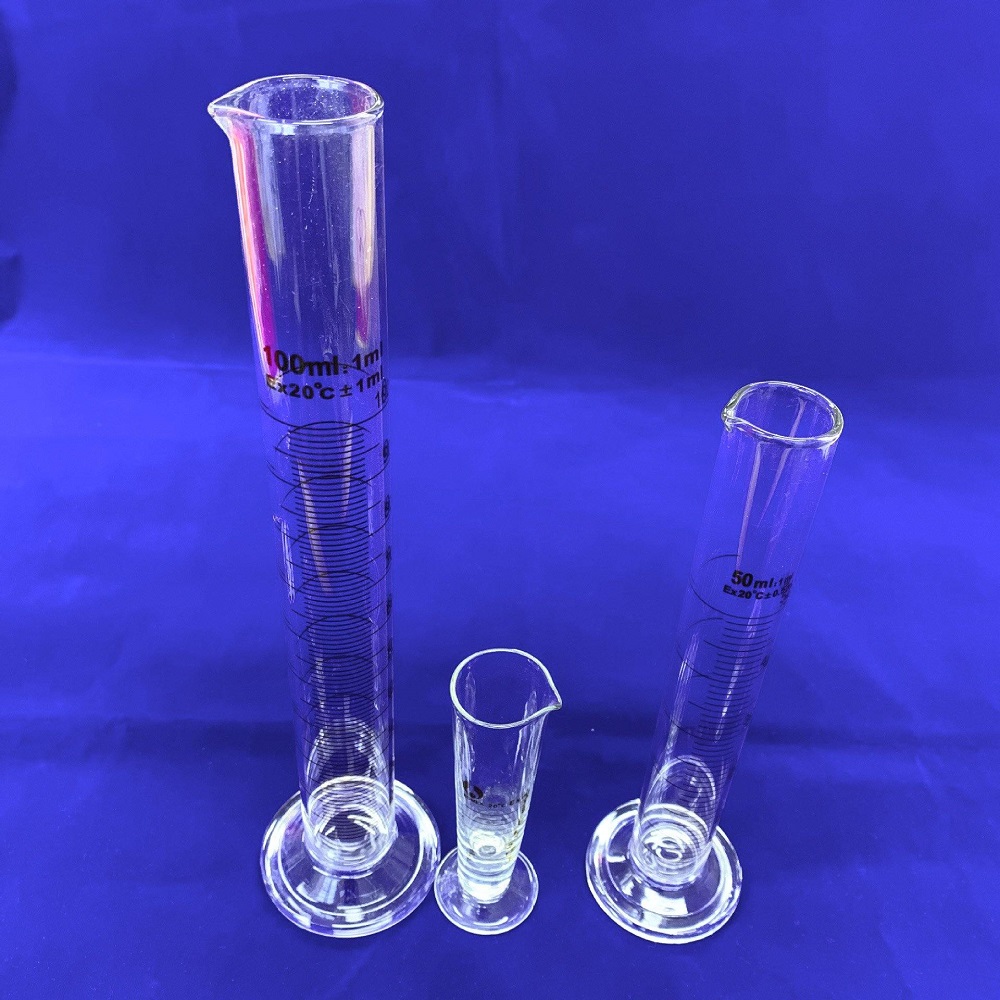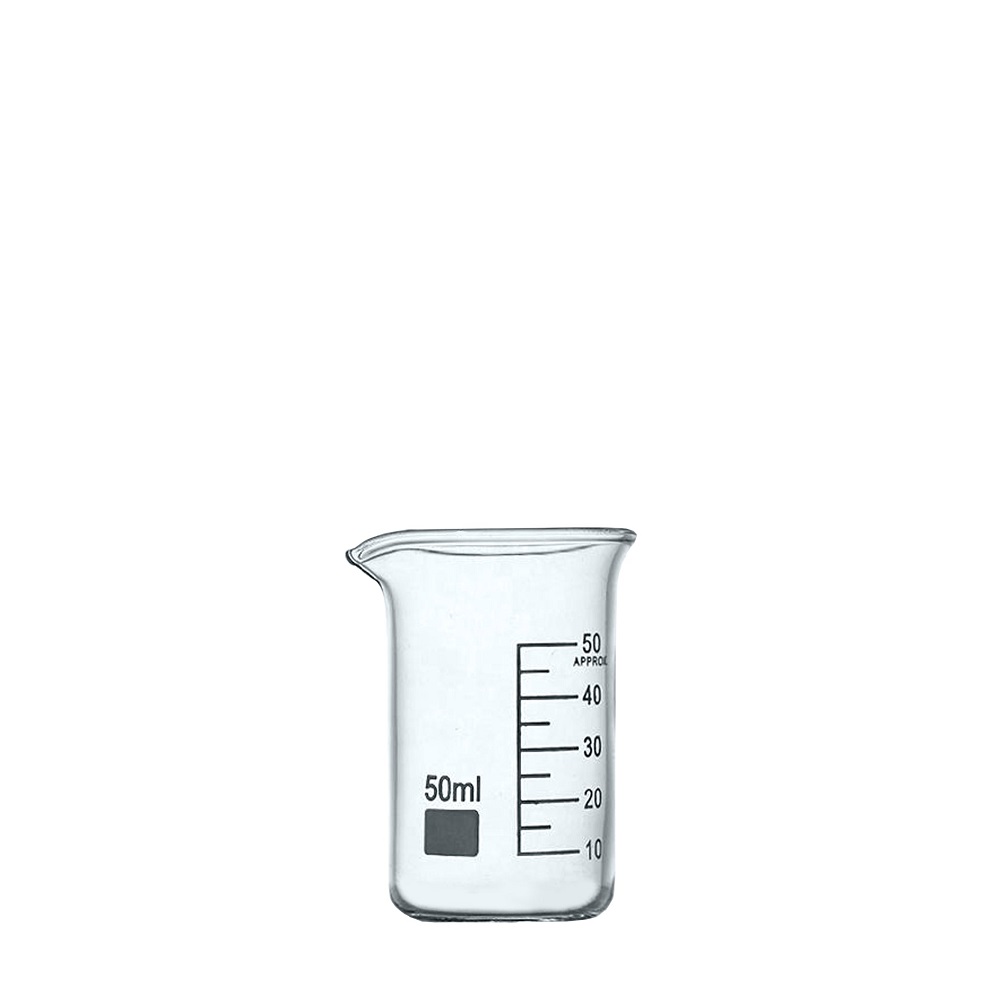Understanding Beaker and Graduated Cylinder Roles in Labs
In the realm of laboratory glassware, two heroes stand prominent for their distinct roles: graduated cylinder vs beaker. Both serve foundational purposes in scientific experiments, yet their functions and suitability differ significantly. As a lab technician or a student in a scientific discipline, it is imperative to comprehend the diverse applications and implications of using these vessels to ensure precision and accuracy in laboratory procedures.
Beakers are widely recognized as an essential lab staple, versatile for an array of tasks such as mixing solutions, performing reactions, and rough volume measurements. Often, they are the go-to container for general purposes due to their simplicity and adaptability to various laboratory environments.
The graduated cylinder, on the other hand, claims its fame from its precision in volume measurement. These slender, marked tubes are indispensable when the volume of a liquid needs to be quantified with great accuracy. Laboratories rely on graduated cylinders for detailed analytical work where the margin for error is notably slim.
Understanding the roles of each – the beakers as generalists and graduated cylinders as specialists – is key to selecting the right tool for the task at hand. It is essential to familiarize oneself with the capabilities and limitations of these instruments to make informed decisions in the lab, ensuring the success of experimental outcomes.

Beaker: The Classic Lab Staple
When you walk into any lab, beakers are a common sight. Their iconic shape—a wide cylinder with a flat bottom—is nearly synonymous with science itself. Beakers come in many sizes, from tiny 10mL ones to large 1L containers. Most have spouts for pouring and rough volume markers on their sides. They’re the Swiss Army knife of lab glassware, handling a mix of tasks like diluting chemicals, making solutions, and roughly measuring liquids.
Uses and Applications of Beakers
Beakers shine when versatility is needed. They’re not just for holding liquids. You might see one heating a sample on a hot plate or holding solid chemicals that need to dissolve. An eye on practicality guides their use. For experiments where exact measures aren’t critical, a beaker is an easy choice.
Pros and Cons of Using Beakers
Pros of these all-around tools include their wide variety of sizes, which makes finding one for almost any need a certainty. The ability to heat or cool the glassware without concern for distorting measurements adds to their practicality. Clearly marked volume lines simplify rough estimations.
On the flip side, beakers are not the tool for precision measurements. Their volume markers are approximations with an error rate upward of 5%. Additionally, their wide mouths can speed up evaporation, which might affect some experiments. Despite these drawbacks, beakers remain a laboratory essential for their unmatched adaptability.
Graduated Cylinder: Precision in Volume Measurement
When it comes to precise liquid measurements, graduated cylinders are indispensable. Unlike beakers, these cylinders are built for accuracy. They have narrow shapes and marked graduations. This allows for measurement of liquid volumes with minimal error. Graduated cylinders are a must-have for any lab procedure needing exact volume readings.
The Functionality of Graduated Cylinders in Labs
Graduated cylinders perform with remarkable accuracy. They are essential in quantitative lab work. Their design is for reading volumes with tight precision. Key uses include mixing solutions with an exact ratio. They also help in titration processes and calibrating other lab equipment. Their tall, slender form helps to read meniscus levels correctly, ensuring precise volume measures.
Advantages and Disadvantages of Graduated Cylinders
Graduated cylinders offer notable advantages in the lab. Their accuracy is their main pro, having an error margin typically between 0.5% to 1%. They come in many sizes, from 1mL to 1L, serving a wide range of uses.
However, there are some cons. They require careful handling due to their shape. Reading the meniscus level takes practice. Also, they are not suitable for storing solutions over time. Despite these disadvantages, their precision makes them a vital tool for specific applications where accuracy is crucial.

Comparing Material and Design
Choosing the right laboratory glassware involves not just understanding its functional uses but also the materials and design that make each piece suitable for specific tasks. In this section, we’ll delve into the differences between the materials used for beakers and graduated cylinders, and compare the design considerations that impact their use in the lab.
Differences in Material: Borosilicate Glass and Plastic Options
When selecting lab glassware, you’ll often come across two common materials: borosilicate glass and plastic. Borosilicate glass is renowned for its durability and heat resistance, essential for experiments that involve heating. Plastic options, typically polypropylene or polymethyl pentene, offer a lightweight and less fragile alternative. Plastic is ideal for tasks that don’t involve high temperatures.
Beakers vs. Graduated Cylinders: Design Considerations
Beakers typically have a wide, flat base and a wide mouth, which aids in mixing and allows for ease of use with stirrers and hot plates. Their design is simple yet functional, catering to a variety of tasks beyond just containing liquids. In contrast, graduated cylinders are slim and tall, designed for precision. Their narrow shape minimizes space above the liquid, reducing measurement errors when reading the meniscus. The design of each, from the stout and sturdy beaker to the precise and delicate graduated cylinder, reflects its purpose in the lab.
Measuring Accuracy: Beaker and Graduated Cylinder Comparison
In the pursuit of lab accuracy, every detail matters—especially the glassware we use. The choice between a beaker and a graduated cylinder often boils down to one factor: measurement accuracy. While they may look similar to the untrained eye, they offer different levels of precision, shaping the outcomes of experiments.
Understanding Measurement Errors and Best Use Cases
Measurement errors can occur when instruments are misread or are inappropriate for the task. Beakers tend to have a higher error margin, around 5% or more, making them less suitable for tasks requiring precise volume measurements. Instead, they are ideal for general mixing or when approximate volumes are sufficient. Graduated cylinders, with their narrow design and more frequent graduation marks, offer a far smaller error margin, generally between 0.5% to 1%. They excel in situations where exact volume measurements are crucial.
Beakers function best for:
- Rough estimates of volume
- General mixing and stirring
- Heating solutions
Graduated cylinders are the go-to for:
- Precise measurements of liquid volume
- Titration experiments
- Diluting or preparing solutions with specific ratios
Accuracy and Precision: When to Use Which
Here’s the lowdown on choosing the right tool: For tasks that demand high precision, turn to the graduated cylinder. Making a standard solution for a titration assay? A graduated cylinder is your best bet. Need to quickly mix a reagent with no need for perfect precision? A beaker’s ease of use makes it the smart choice.
In short, use a beaker when precision is not paramount, and opt for a graduated cylinder when accuracy is non-negotiable. This simple guideline will help ensure that your lab work is both efficient and reliable, leading to dependable results and minimized error rates.

Best Practices for Using Beakers and Graduated Cylinders
For lab success, using beakers and graduated cylinders right is key. Here are the best practices.
Ensuring Accurate Measurements
Accuracy in the lab hinges on proper tool use. Here’s how to get precise readings.
- Use graduated cylinders for precise measurements. Their slim design cuts error margins down.
- Read the meniscus at eye level to ensure accuracy.
- When exact volumes aren’t needed, beakers work fine.
- Always check for damage before using glassware.
- Clean thoroughly prior to use, to prevent cross-contamination.
- Calibrate regularly, especially if using for precise measures.
Care and Maintenance for Longevity
Lab glassware lasts longer with proper care. Here’s what to do.
- Wash glassware right after use to avoid residue.
- Handle with care – beakers and graduated cylinders can break.
- Store them upside down on a rack.
- Use mild detergents and soft brushes for cleaning.
- Inspect for cracks or chips regularly.
- Autoclave or sterilize as needed, following guidelines.
Taking care of beakers and graduated cylinders ensures accuracy and extends their life. Regular maintenance is the key to reliable results.
Conclusion: Making the Right Choice for Your Lab Needs
When it comes to completing lab tasks, choosing the right glassware matters. It can mean the difference between rough estimates and precise measurements. Both beakers and graduated cylinders hold their places in the lab. Yet, each fits specific uses. By now, you understand their strengths and where they fall short.
Pick beakers for general lab work where exact numbers are not critical. Their wide mouths are perfect for stirring solutions and approximate measures. Yet, for precise liquid measurements, graduated cylinders are your best bet. Their slim design and detailed markings promise high accuracy for your sensitive experiments.
Think about your goals before selecting. Need something all-purpose? A beaker is your friend. It’s durable and easy to handle. Need exact volume readings? Take a graduated cylinder. It’s designed just for that.
Remember, proper use and care can extend the life of your lab glassware. Clean them well and store them safely. They’ll be ready for whatever task comes next.
Make your lab work count. Choose the right tool for your experiments. Beakers and graduated cylinders, each has their place. Use them well, and you’ll get reliable, reproducible results every time.
